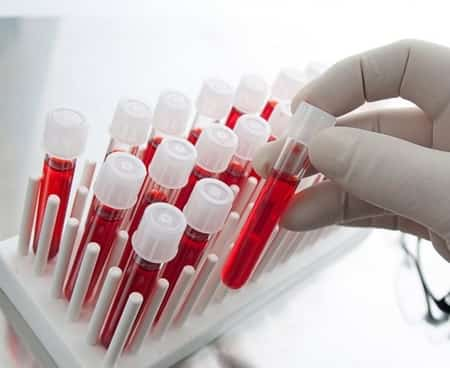Meaning of high and low ESR levels in a blood test describes how fast red blood cells settle in a tube, a simple measurement that reflects underlying inflammation. It works like watching how quickly dust drops in still air — a faster fall usually hints at something irritating the system. This gives a clear starting point for understanding what those shifts may signal.
High and low ESR levels in a blood test show how much inflammation is influencing the body, with high results indicating active inflammatory changes and low results appearing much less often. The meaning of ESR levels in real-world practice becomes clearer when you note that elevated values are especially common in older adults, where chronic inflammatory disorders are more prevalent.
After routine testing, a person may see numbers that rise or drop — a pattern of ESR changes that repeats alongside certain symptoms. That’s when reviewing the underlying causes, the typical signs, and the possible medical explanations becomes necessary. This sets the stage for a straightforward breakdown of what these results can imply.
How ESR Works
ESR measures the rate at which erythrocytes fall through plasma when blood is left undisturbed in a Westergren tube. Red blood cells that aggregate faster tend to drop more quickly, leading to higher ESR values. Fibrinogen and other acute-phase proteins promote this clumping and, in turn, increase sedimentation. ESR is influenced by plasma viscosity, erythrocyte morphology, and the presence of inflammatory mediators.
In practice, ESR responds to inflammation more slowly than CRP but remains elevated longer, which helps physicians track the overall inflammatory trajectory. CRP spikes rapidly and resolves quickly, while ESR provides a broader overview of ongoing inflammation. ⧉.
Normal ESR Levels
Practical Table: ESR Ranges
| Group | Normal ESR (mm/hr) | Notes |
|---|---|---|
| Men | 0–15 | Typical adult male range |
| Women | 0–20 | Slightly higher physiological values |
| Children | 0–10 | Lower expected levels |
| Pregnancy | Variable increase | Due to plasma protein changes |
High ESR: What It Really Means
Practical Table: Possible Causes of High ESR
| ESR Range (mm/hr) | Interpretation | Common Causes |
|---|---|---|
| 20–40 | Mild elevation | Mild inflammation, anemia |
| 40–80 | Significant elevation | Infection, autoimmune disease |
| >80 | Severe elevation | Vasculitis, severe inflammation, malignancy |
Modern Diagnostic Approach
Practical Table: Diagnostic Methods
| Method | Accuracy | Typical Cost |
|---|---|---|
| Westergren | 8/10 | $10–$20 |
| Automated analyzers | 9/10 | $20–$40 |
Westergren Method
The Westergren method remains the gold standard for ESR measurement. Blood is drawn into a calibrated tube treated with anticoagulant. After one hour, the height of the clear plasma column is measured. Accuracy: 8/10. Average cost: $10–$20. ⧉.
Automated ESR Analyzers
Modern U.S. laboratories frequently use automated ESR analyzers such as the Alcor iSED and Streck ESR‑AII. These instruments rely on optical sensors and centrifugal techniques to produce accurate results in 5–10 minutes. Accuracy: 9/10. Average cost: $20–$40. ⧉.
Combined Diagnostic Panels
Clinicians often evaluate ESR alongside CRP and CBC. CRP provides immediate insight into active inflammation, while CBC helps detect anemia or infection. Using these tests together increases diagnostic accuracy and reduces unnecessary follow-up testing. ⧉.
Treatment: Addressing the Root Cause
Infectious Causes
When infection is the cause of high ESR, treatment typically involves targeted antimicrobial therapy. Physicians prescribe specific medications based on culture results and imaging findings. ESR gradually declines as the infection resolves.
Autoimmune and Rheumatologic Disorders
Autoimmune diseases often require immunomodulatory therapy. U.S. clinicians may use drugs such as Humira (adalimumab), Enbrel (etanercept), Rituxan (rituximab), and methotrexate depending on the condition. These therapies reduce inflammation and stabilize ESR levels over time.
Chronic Inflammatory Conditions
For non-autoimmune chronic inflammatory issues, anti-inflammatory medications and disease‑specific treatment plans are used. ESR changes help physicians monitor treatment response and adjust medications accordingly.
Oncology-Related Causes
If high ESR correlates with malignancy, treatment focuses on controlling the underlying disease through established oncologic pathways. ESR often serves as a secondary monitoring tool.
Real U.S. Case Studies
Case 1 — Female, 62, Oregon
The first symptoms appeared subtly: dull temporal headaches, scalp tenderness, and brief episodes of jaw fatigue while chewing. Initially, she attributed this to stress. Within two weeks, the pain intensified, and she noticed mild vision blurring during early mornings. Concerned, she visited her primary physician, who immediately ordered ESR and CRP tests. Her ESR returned at 92 mm/hr, prompting urgent vascular ultrasound. Temporal arteritis was confirmed. ⧉. Treatment began the same day, leading to gradual symptom relief. She later shared that the early diagnosis “saved her sight,” as delayed care could have resulted in partial vision loss.
Case 2 — Male, 44, Florida
He had been feeling “off” for nearly a month — low-grade fever, deep fatigue, morning joint heaviness, and a sense that something wasn’t right. He visited an urgent care clinic after noticing swollen knuckles. His ESR measured 56 mm/hr, and a follow-up rheumatology evaluation revealed early seronegative autoimmune arthritis. Physicians started disease‑modifying therapy, and within weeks the joint swelling eased. He described his experience as “a wake-up call” that pushed him to seek help earlier rather than ignoring subtle signs.
Case 3 — Female, 29, Texas
A young office worker, she initially experienced stiffness in her hands each morning, lasting 20–30 minutes. She dismissed it as computer overuse. But as weeks passed, she noticed the stiffness creeping into her elbows and knees. Her ESR measured 28 mm/hr, only mildly elevated, but her clinician recognized a pattern and ordered ultrasound imaging of her joints. Early rheumatoid arthritis was confirmed. She later reflected that the mild ESR increase was “just enough to push the doctor to look deeper.” Early therapy allowed her to remain active and avoid long‑term joint deterioration.
Editorial Advice
A rising or persistently elevated ESR should never be dismissed, especially if accompanied by symptoms such as stiffness, fatigue, or unexplained pain. According to Reyus Mammadli, medical consultant, ESR becomes especially meaningful when evaluated alongside other biomarkers. He recommends that clinicians consider trends rather than isolated values, as a single measurement rarely tells the full story.
Patients should keep track of symptoms, follow through with recommended evaluations, and discuss any ongoing concerns with their healthcare providers. Understanding ESR empowers individuals to take a more informed approach to their overall health.
About the Author
Reyus Mammadli is the author of this health blog since 2008. With a background in medical and biotechnical devices, he has over 15 years of experience working with medical literature and expert guidelines from WHO, CDC, Mayo Clinic, and others. His goal is to present clear, accurate health information for everyday readers — not as a substitute for medical advice.







